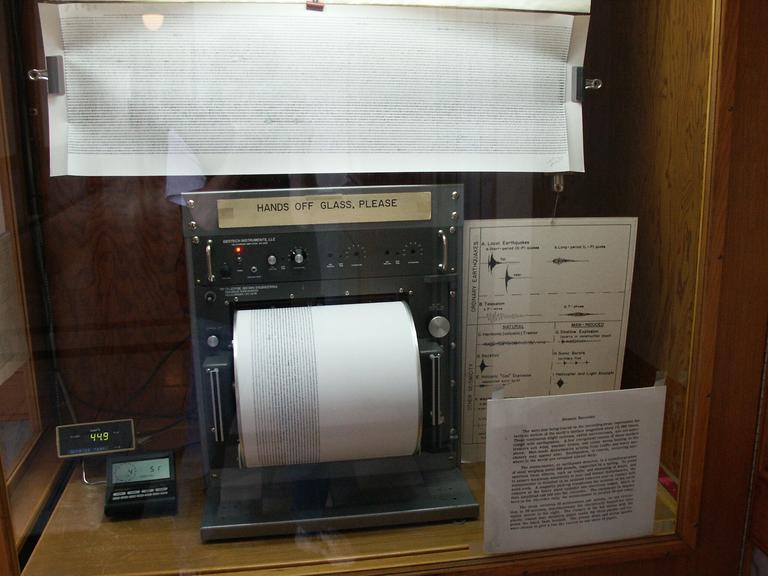As near as I could tell, we didn't have an earthquake on Saturday. The text on the sign in the bottom corner reads:
Seismic Recorder The wavy line being traced on the recording drum represents the vertical motion of the earth's surface magnified about 10,000 times. These continuous slight motions, called microseisms, are not associated with earthquakes. A few recognized causes of these surface tremors are wind, weather fronts, and ocean waves beating on the shore. Man-made disturbances arising from traffic and heavy machinery may appear also. Earthquakes, of course, occurring anywhere in the world are revealed almost daily.
The seismometer, or earthquake detector, is a cylindrical mass of steel weight around 200 pounds, supported by a spring. To avoid spurious local effects, such as traffic and slamming of doors, and to assure maximum sensitivity to near and distant disturbances, the seismometer is mounted on an isolated concrete pier in contact with solid rock. A magnetic pick-up transforms the motions of the earth relative to the heavy steel cylinder into electrical output, which is then amplified and fed into the recorder. The equipment on display here is the recorder only; the seismometer is located 50 feet away.
The drum revolves 30 millimeters per minute, or one revolution in 30 minutes; simultaneously the electrically heated hot wire stylus moves to the right. The contact of the hot stylus with the plastic coated heat sensitive paper melts the white plastic and exposes the black base beneath. The present drum and stylus speeds were chosen to give a two day record on one sheet of paper.
That's my reflection in the glass.
(Click the image to view a larger version.)
